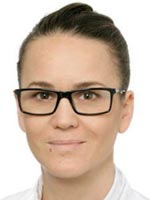The typical time at which a calcium deposits becomes noticeable is the 35th to 50th year of life, although it is difficult to say when it really developed, since in many patients symptoms only appear a few years after the onset of the disease. On average, women are affected slightly more often than men.
Causes Of The Calcific Tendinitis
There are various causes that can be considered for a calcific tendinitis. This includes external influences such as:
- An excessive mechanical load (for example, in certain sports or other work that is hard on the shoulder in everyday life and / or at work)
- Accidents or falls
- Cracked one of the shoulder tendons
- But also the body's own processes such as poor tissue circulation or
- Degenerative processes in the context of aging processes
The psyche plays an important role in the development of many diseases. The shoulder movement through the psyche can also be restricted by poor posture. Lime deposits caused by the psyche are unlikely. Pain symptoms can, however, be exacerbated by psychological problems.
How Is The Limescale Formed?
The process that can result from all of these different causes is ultimately the same:
The tissue in the corresponding area is not sufficiently supplied with blood. This transforms the tendon tissue into fibrous cartilage. Later, when this fibrous cartilage dies, it can happen that lime deposits at this point. If this “calcification” is pronounced, the tendon swells and can press on surrounding structures, such as the bursa or tendons of the surrounding muscles, which ultimately leads to inflammation and ultimately pain. This swelling can also lead to a lack of space within the joint and thus to the collision of its components, which is called impingement syndrome, which is almost always accompanied by a calcareous shoulder.
However, sometimes it happens that the body reabsorbs the limescale on its own, the limestone deposit dissolves and disappears again unnoticed. Because of the rather high spontaneous healing rate of this disease, it is also important to always weigh the treatment options well. However, why calcifications form in humans and not others with a roughly comparable risk profile, has not yet been fully clarified.
Symptoms Of Calcific Tendinitis
The main symptom of a calcareous shoulder is (sometimes very severe) pain.
These mainly occur during the movements in which the muscle of the affected tendon is involved. Since this is usually the supraspinatus tendon, most patients with a calcific tendinitis experience particularly pain when the arm is moved over the head or outwards / backwards, since the supraspinatus muscle plays an important role in these movements. The pain often has a rather stabbing character and can radiate up to the neck or the other arm. Pain also typically occurs at night when sleeping on the affected side. This pain is usually accompanied by more or less pronounced restrictions on movement of the shoulder joint. In the worst case, paralysis of the entire arm can even develop.
There are both symptoms that develop slowly over a longer period of time, become steadily worse or even subside at some point, and that severe pain suddenly appears without a recognizable acute trigger.
Pain in the upper arm
With a calcific tendinitis, the pain initially appears directly in the shoulder joint, especially when working overhead or with heavy loads, but over time, pain in the upper arm also occurs. This can happen on the one hand through calcification of the biceps eyes, which also pulls through the shoulder joint, on the other hand, compensatory overloading of the upper arm muscles can occur if the strength of the rotator cuff is more and more limited by the limescale deposits.
Pain at night
Affected people suffer from shoulder pain, especially at night, on the affected shoulder. The pressure on the joint increases the pain, the blood flow is deteriorated and the symptoms can worsen.
With a bursitis associated with the calcareous shoulder, pulsating pain at night can occur, regardless of the lying position.
Calcific Tendinitis Diagnosis
The options for diagnosing a calcific tendinitis vary depending on how advanced the disease is at the time of the doctor's visit. The diagnosis is often even a coincidental diagnosis, which is made as part of another examination, since it sometimes has a very long pain-free interval.
On the one hand, the patient's exact medical history is important, i.e. the exact questioning of the pain:
- When,
- how often,
- how strong,
- where,
- since when,
- in which way they occur above all.
It can help the doctor if the patient brings a pain diary to his appointment, in which he has noted down these points over several days. During the physical examination, the orthopedist performs various tests that are intended to check the range of motion of the shoulder joint and to show whether and to what extent a movement restriction has already developed.
In addition to the detailed survey, imaging methods represent the most important pillar of diagnosis for a calcific tendinitis. Both limescale deposits can be recognized very well and precisely localized in both ultrasound and X-rays.
A magnetic resonance imaging of the shoulder (MRI) can also show the calcifications, but is not primarily carried out due to the higher complexity and costs. It must always be borne in mind that the size and number of limescale spots does not always have to correlate with the extent of the complaints from patients. Furthermore, lime is not so easy to see in the MRI of the shoulder.
Ultrasonic
Calcific tendinitis can be easily visualized using ultrasound. In addition, the sonographic examination is a quick, uncomplicated and side-effect-free method. The limescale deposits appear as an echo-rich, ie bright structure in the image, which may also cast typical shadows in the image. The deposit is usually found in the middle of the tendon.
MRI
On the MRI you can see a calcific tendinitis based on the thickened tendons and the limescale deposits in the tissue. However, because of the better availability, an X-ray examination is often carried out. A sonographic examination (ultrasound) is also a good addition to X-rays and MRI. With the Sono, the patient is not exposed to any radiation, which is an advantage for X-rays, an ultrasound device is also available in every medical facility and the examination can be carried out quickly and easily, which is a clear advantage over MRI.
Conservative therapy of calcific tendinitis
Muscle exercises
A calcific tendinitis manifests itself in with severe movement-related pain. The limescale in the tendons painfully restricts the movement of the joint. Exercises can sometimes be difficult to perform because they can cause pain in the joint. There are gentle stretching exercises that slowly and gently stretch the tendons and muscles and provide more flexibility in the joint. Careful mobilization can also relieve pain and improve movement. The movements should be relaxed and painless, the pain should be considered and the exercise should be interrupted. Large sweeping movements lend themselves to mobilization. However, you can only start with a small range of motion and then slowly increase the motion. Strengthening the rotator cuff can also help reduce the symptoms of the calcific tendinitis. In order not to put additional strain on the tissue, static holding exercises are available to improve strength, this is called isometric strength training.
Physiotherapy
Physiotherapy is very important in the conservative therapy of the calcific tendinitis. Depending on the stage of the disease, intensive exercises and techniques are used to improve or maintain the mobility of the shoulder and counteract muscle loss. This also stimulates blood circulation, which can accelerate the breakdown of the lime crystals. However, the crystals cannot be eliminated directly by physiotherapy.
Cortisone injection
Cortisone is an analgesic and anti-inflammatory drug that is often used to treat joint pain. This also applies to the calcific tendinitis, if severe pain cannot be treated or cannot be adequately treated with drug therapy. Cortisone can be injected directly into the joint, but it should be borne in mind that cortisone can have a damaging effect on ligaments and cartilage and should therefore only be used in precisely dosed form if indicated.
Radiotherapy
Radiation therapy can make sense when pain first appears. However, it is only promising in the early phase of the disease. Radiotherapy is administered in low doses and is considered to have few side effects.
With radiation therapy, rays are thrown into the tissue that serve to destroy the limescale deposits. The lime fragments that arise here can be removed more easily. In addition, a new inflammatory reaction arises, which leads to increased blood circulation. Immune cells increasingly get into the shoulder and the breakdown of existing calcium deposits is improved. However, radiation therapy increases, even if only slightly, the subsequent tumor risk and should therefore be discussed primarily with young people. Radiation therapy is an IGeL service, so it must be borne by the person concerned.
Shock Wave Therapy
Probably the best known is extracorporeal shock wave therapy (ESWT). This has only been used for about 10 years, but shows a very good success rate.
Shock waves are short, high-energy waves that only discharge their energy when they hit solid tissue. In this special case, skin and muscles are simply penetrated, while the limescale is then hit by all of the energy. The shock waves are focused on the painful area using a pillow filled with water, penetrate to the calcification and break up the lime into tiny particles, which can then be resorbed by the body. In addition, shock wave therapy stimulates the blood circulation in the tissue, which also ensures that the body's own healing process is promoted. This therapy can normally be carried out on an outpatient basis, so the patient does not have to be admitted to the hospital and can go home immediately after the session. Pain with this treatment is minimal and the side effects, such as bruising or swelling, are very rare when used properly.
How often the ESWT has to be repeated depends heavily on the severity of the disease. For many, however, there are three dates. If there is still no success after three months, it usually makes sense to stop the treatment and still perform an operation.
The success rates for shock wave therapy are around 40-70%.
Shock wave therapy, however, is an IGeL service. In other words, a service that is not covered by the health insurance and must be borne by the patient.
Osteopathy
Osteopaths can treat a calcific tendinitis. You can deal with joint problems and treat them with appropriate techniques, but you can also look at and treat the organism holistically. Fascia therapy is often used. In the limestone shoulder, immobilization of the joint can lead to adhesions of the connective tissue, which then lead to problems in other parts of the body, e.g. can lead to the neck. Such problems can be treated by an osteopath.
Calcific tendinitis surgery
A calcareous shoulder (calcific tendinitis) is treated surgically if all conservative therapies, such as the use of medication (painkillers, anti-inflammatory drugs or cortisone injections) and physiotherapy have not responded.
How does such an operation work?
Surgery to treat a calcific tendinitis is a relatively minor procedure, also known as arthroscopic limescale removal on the shoulder. The lime deposits in the tissue of the shoulder vision are usually removed in a minimally invasive manner. An endoscope with a camera and special surgical instruments are inserted into the shoulder joint via small skin incisions. With the help of the camera, the surgeon locates the visible limescale deposits and removes them with a sharp spoon. The wound is then rinsed out well to remove even small lime particles from the joint. Removing the lime creates a notch in the tendon that heals on its own. The advantage of a minimally invasive operation is that the procedure only creates small wounds and the risk of infection is low. In addition, the wounds heal quickly and the joint can be moved again after a short time.
In severe cases in which a minimally invasive removal of the lime deposits is not possible, the lime shoulder has to be operated conventionally. The skin and the underlying fat and muscle layers are opened by a cut several centimeters long. After the limescale has been removed, the wound is sutured again. The operation lasts a maximum of 45 minutes, is performed under general or local anesthesia and can be done on an outpatient or inpatient basis.
Do I need anesthesia for a calcific tendinitis surgery?
General anesthesia is not absolutely necessary to operate a calcific tendinitis. Many clinics also perform a so-called interscalene plexus block, in which only the nerves of the diseased shoulder are specifically anesthetized. Local anesthetics are injected into the arm nerve network. This procedure is a relatively simple intervention that involves only a few risks. Ultimately, the surgeon decides which type of anesthesia is best used and discusses it with the patient before the operation.
What are the risks of surgery?
Like any surgical procedure, surgery on a shoulder involves certain risks. In contrast to other operations, this is a small intervention and the risks are correspondingly low.
The operation can cause bruising (hematoma) and pain on the operated shoulder. It is rare for a blood clot (thrombosis) to form after the operation, which is carried over with the blood stream and e.g. a vessel in the lungs is blocked (embolism). Theoretically, bleeding can also occur during the operation, but since there are no large vessels or important nerves in the operated region, this is unlikely. Small vessels are sealed directly by electrical current ("cauterized") during the treatment.
In less than one percent of the cases, germs can get into the wound as a result of the operation and lead to inflammation and wound healing disorders. Signs of a wound infection are increasing pain and possibly fever, which occurs several days after the surgery. The wound swells, becomes warm and is very red. Since arthroscopic limescale removal on the shoulder is usually performed in a minimally invasive manner, the risk of wound infection is extremely low.
In general, it can be said that this operation is a routine procedure that is relatively low-risk and causes little pain.
What does the aftercare look like?
In the so-called postoperative phase directly after the operation, the patient is brought to the recovery room. Freshly operated patients wake up from the anesthesia under constant control of the vital signs (pulse, blood pressure and breathing).
After the procedure, the wound must be cooled at regular intervals. Due to the cooling, the vessels contract and the swelling of the surrounding tissue is promoted. Pain can be more or less severe as a result of the procedure, which is why an important part of the aftercare is taking painkillers (e.g. ibuprofen). A regular dressing change follows until the threads can finally be removed after 10 to 12 days. As long as the threads have not yet been pulled, the patient must take care of themselves. After that, the arm can and should be moved directly and no immobilization is necessary.
Physiotherapy help to mobilize the shoulder and thus improve the range of motion. Regular movement of the shoulder promotes healing of the wound and prevents the build-up of limescale.
How much pain do you have after the operation and what can you do about it?
The pain after the operation is usually significantly less than the pain caused by the calcareous shoulder before the procedure. Arthroscopic limescale removal is a relatively small procedure in which only two to three small incisions are made. As a result, the resulting injuries are minor and the wounds heal quickly.
After the procedure, the symptoms immediately improve, only the small surgical wounds cause pain. Cooling with ice packs and cooling pads relieves the pain and prevents the wound from swelling. In addition, patients receive oral pain therapy with anti-inflammatory drugs (e.g. ibuprofen 3x600 mg per day or diclofenac 2x75 mg per day) for the first few days after the procedure.
How long am I on sick leave / unable to work after a calcific tendinitis surgery?
After removing the limescale deposits in the shoulder using minimally invasive shoulder arthroscopy, the patients remain in the hospital for one to two days. Then the shoulder must be immobilized until the threads are pulled. Until then, the mobility in the shoulder joint has been significantly reduced and the patients need help with everyday tasks and in the household. After about three weeks, the wound should have healed completely and the patient can put pressure on the shoulder again.
The duration of the sick leave essentially depends on the job the patient is doing. Patients who work in the office are on sick leave for around two to four weeks, whereas people who have to do heavy physical work are unable to work longer. In such cases, the patient can receive sick leave for up to two months after a limestone shoulder operation. It then makes sense that the person concerned gradually returns to work and does not immediately work full-time again.
How long is the healing time?
The operation of a calcific tendinitis removes all limescale deposits and the shoulder is considered to have healed and the limescale deposits are unlikely to recur. After the procedure, the shoulder must be spared for three weeks, while gentle mobilization should take place at the same time through physiotherapy. The operated shoulder tendon usually heals easily and wound healing is complete after three weeks.
Prophylaxis of calcific tendinitis
Since you do not know exactly why a calcific tendinitis is formed, it is also difficult to prevent it. Since it is assumed that it often arises in connection with mechanical overloading of the shoulder joint (especially during overhead activities), this type of stress should be kept as low as possible. Otherwise, there is unfortunately not much that can be done to protect yourself from this disease.
Does the diet affect a calcific tendinitis?
The calcific tendinitis means limescale deposits in the tissue. However, these are probably not directly related to increased calcium consumption. The diet seems to have no influence on the development of the disease.
Nevertheless, inflammation-related symptoms can possibly be alleviated by a healthy balanced diet. At least for shoulder arthrosis, one suspects that a healthy low-meat (especially pork) diet improves the inflammatory state. Large quantities of eggs, butter, alcohol and coffee should also be avoided. In contrast, certain types of vegetables and fruits as well as some herbs (anise, fennel, turmeric ...) can have an anti-inflammatory effect. These recommendations are considered helpful for osteoarthritis of the shoulder, but since inflammation of the joints also occurs with tendinosis calcarea, symptoms can also be improved if necessary through a conscious diet.
Forecast
The prognosis of a calcific tendinitis can be classified as relatively good.
In many patients, the calcium deposits dissolve on their own without any treatment. For those who do not, the disease can usually be managed through one of the various treatment options or a combination of these. If a calcific tendinitis is left untreated for a long time, there is a risk that the tendon and therefore the affected muscle will remain permanently weakened, which in part can lead to osteoarthritis in the further course. Therefore, one should not wait too long with therapy, even if spontaneous healing is not unlikely.
Can a calcific tendinitis dissolve on its own?
The calcific tendinitis dissolves on its own in a large number of cases. The limestone crystals are first absorbed by the body and then the tissue is regenerated. In rare cases, a calcific tendinitis persists long enough to be treated surgically.

























 Loading ...
Loading ...


